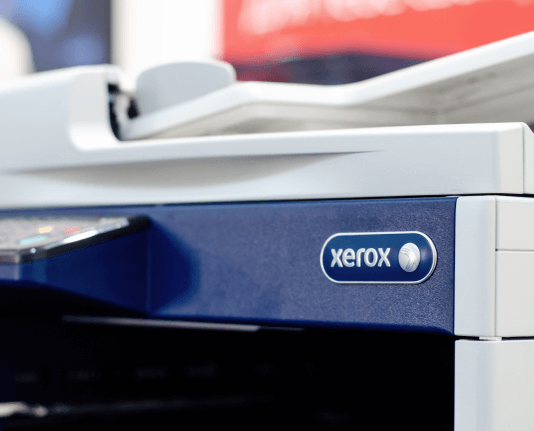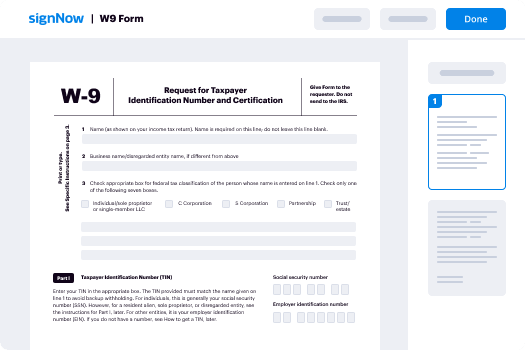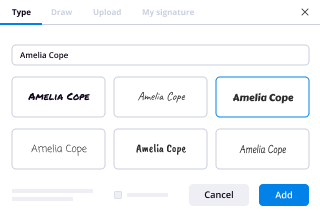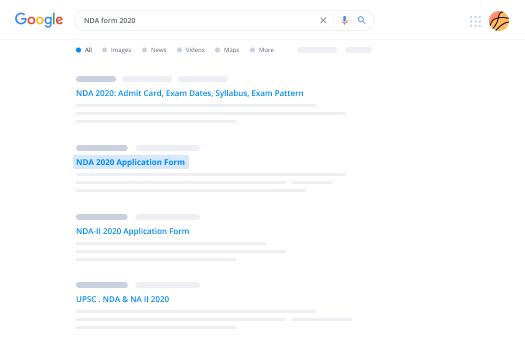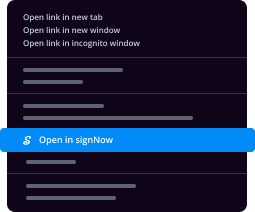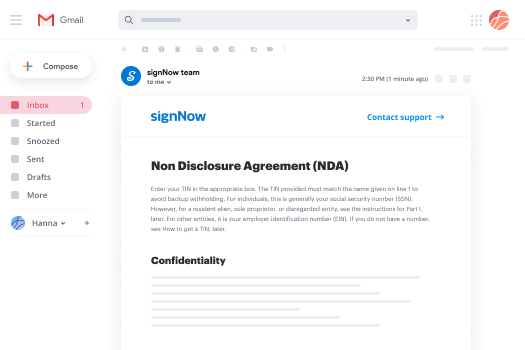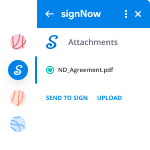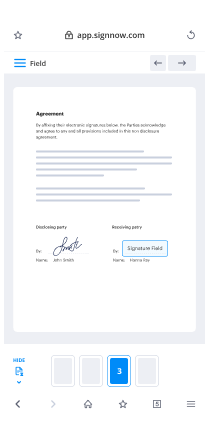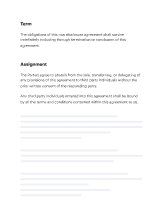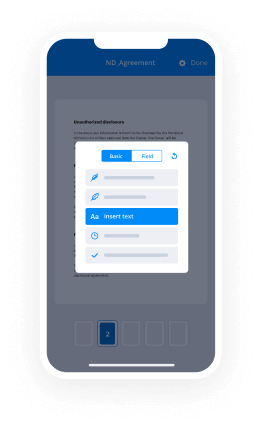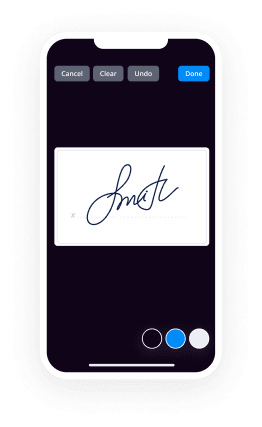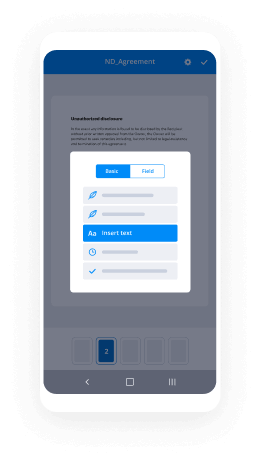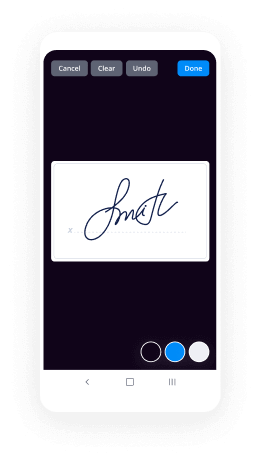How To Implement eSign in Word
Contact Sales
Make the most out of your eSignature workflows with airSlate SignNow
Extensive suite of eSignature tools
Robust integration and API capabilities
Advanced security and compliance
Various collaboration tools
Enjoyable and stress-free signing experience
Extensive support
Keep your eSignature workflows on track
Our user reviews speak for themselves






How to Apply eSign in Word
Applying eSign in Word can optimize your document signing procedure and improve efficiency. With airSlate SignNow, you can effortlessly generate, dispatch, and oversee electronic signatures, making it an essential tool for enterprises of all scales. This manual will guide you through the straightforward process of integrating eSign into your workflow using airSlate SignNow.
How to Apply eSign in Word
- Launch your web browser and head to the airSlate SignNow webpage.
- Establish a free trial account or sign in if you already possess one.
- Choose the document you intend to sign or send for signatures by uploading it.
- If you aim to reuse this document, consider saving it as a template.
- Sign the document and assign spots for the recipient's signatures.
- Click 'Continue' to set up and dispatch an eSignature invitation.
By adhering to these steps, you can efficiently apply eSign in Word, utilizing airSlate SignNow's capabilities to streamline your document management. This platform not only boosts productivity but also guarantees the integrity and security of your files.
Prepared to revolutionize your signing procedure? Initiate your free trial with airSlate SignNow today and enjoy the advantages of a user-friendly, cost-effective eSignature solution that delivers excellent ROI, clear pricing, and outstanding 24/7 support!
How it works
Rate your experience
-
Best ROI. Our customers achieve an average 7x ROI within the first six months.
-
Scales with your use cases. From SMBs to mid-market, airSlate SignNow delivers results for businesses of all sizes.
-
Intuitive UI and API. Sign and send documents from your apps in minutes.
A smarter way to work: —how to industry sign banking integrate
FAQs
-
What is the best way to learn How To Implement eSign in Word?
To learn How To Implement eSign in Word, you can start by exploring the user-friendly guides provided by airSlate SignNow. Our platform offers step-by-step instructions that make it easy for anyone to integrate eSignature functionality directly within Microsoft Word documents.
-
Can airSlate SignNow help me with How To Implement eSign in Word for my business?
Yes, airSlate SignNow is designed to streamline the process of How To Implement eSign in Word for businesses of all sizes. With our cost-effective solution, you can effortlessly send, sign, and manage documents while ensuring compliance and security.
-
What features does airSlate SignNow offer for implementing eSign in Word?
airSlate SignNow includes robust features such as customizable templates, real-time tracking, and mobile access, making it easier to implement eSign in Word. You can also automate workflows and integrate with various applications to enhance your document signing processes.
-
Is there a cost associated with How To Implement eSign in Word using airSlate SignNow?
airSlate SignNow offers flexible pricing plans tailored to different business needs. You can implement eSign in Word at an affordable rate, ensuring that you get maximum value from your investment without compromising on features or support.
-
How secure is the eSigning process when I implement eSign in Word with airSlate SignNow?
When you implement eSign in Word using airSlate SignNow, you can rest assured that your documents are secure. We utilize bank-level encryption and comply with industry standards to ensure that your eSignatures are valid and protected throughout the signing process.
-
Can I integrate airSlate SignNow with other applications while learning How To Implement eSign in Word?
Absolutely! airSlate SignNow easily integrates with various applications, enhancing your experience as you learn How To Implement eSign in Word. Whether it's CRM systems, cloud storage, or project management tools, our platform supports seamless integration for a smooth workflow.
-
What are the benefits of using airSlate SignNow for eSigning in Word?
Using airSlate SignNow to implement eSign in Word brings numerous benefits, including increased efficiency, reduced turnaround times, and improved document management. You'll also enjoy the convenience of accessing your documents anytime, anywhere, which enhances productivity.
-
Why can't 1/10 be properly defined in binary system by computers?
Sure it can.Both people and computers can represent numbers in a whole lot of ways. The word “binary” usually refers to how you represent small natural numbers in base [math]2[/math], but there are many different representation schemes for other types of numbers.What you may be thinking of is that the rational number [math]1/10[/math] cannot be precisely represented by one of those representation schemes: floating-point arithmetic with a base-[math]2[/math] exponent.In floating-point arithmetic with base [math]b[/math] we represent a number [math]X[/math] as a triplet of numbers [math](s,m,e)[/math] where[math]\displaystyle X=(-1)^s\times m \times b^e[/math]Here [math]s[/math] is just [math]0[/math] (for positive numbers) or [math]1[/math] (for negative numbers), [math]m[/math] is called a mantissa and is a natural number in some fixed range, [math]b[/math] is a fixed number (usually [math]2[/math] or [math]10[/math]) and [math]e[/math] is another (positive or negative) integer called the exponent, also limited to some prescribed range.This is a pretty good representation scheme. It combines high precision with a decent range for both large and small numbers, and it enables arithmetic operations to be carried out reasonably efficiently – though it makes addition and subtraction much harder than multiplication and division, confusing many people who are used to it being the other way around.As you can see, there are different flavors of this representation, depending on the value of [math]b[/math] and the allowed ranges for [math]m[/math] and [math]e[/math]. One of the prevailing current standards, IEEE 754, doesn't actually enforce all of those details. It allows both [math]b=2[/math] and [math]b=10[/math].If [math]b=10[/math], you can definitely represent [math]1/10[/math] precisely:[math]\displaystyle \frac{1}{10}=(-1)^0\times 1\times 10^{-1}[/math]so [math]1/10[/math] is represented with complete precision as [math](0,1,-1)[/math].This, incidentally, is totally independent of how the numbers [math]m[/math] and [math]e[/math] themselves are represented. They can be stored as base [math]2[/math], base [math]10[/math] or anything else; the sign of [math]e[/math] can be stored separately, or sometime a fixed offset is subtracted from the stored value of [math]e[/math], and so on – it doesn't matter. As long as you’re using [math]b=10[/math], you can represent [math]1/10[/math] precisely.Now, if you choose to implement floating-point arithmetic using [math]b=2[/math] as a base, then of course the only numbers you can represent precisely are certain rational numbers whose denominators are a power of [math]2[/math]. You certainly can't precisely represent anything else, including fractions whose denominator has prime factors other than [math]2[/math].But again: floating-point arithmetic with base [math]2[/math] isn't the only option for floating-point arithmetic, and floating-point arithmetic of any kind isn't the only way of representing numbers in computers. Computer hardware or software can be designed to represent fractions [math]a/b[/math] as pairs of integers [math](a,b)[/math], allowing you to represent any rational number whose numerator and denominator are within a reasonable range. In this method, [math]1/10[/math] would get stored as [math](1,10)[/math], which is [math](1,1010)[/math] in binary. Not a problem at all.
-
Is it possible to implement a single sign on two WordPress websites? How?
There were a few single sign on plugins available but they haven't been updated in a while.http://wordpress.org/extend/plug...http://wordpress.org/extend/plug...most use some 3rd party or other such as active directory or LDAP.there probably is plugins available for openID which may help.there's also http://wordpress.org/extend/plug...which could help.though i'm not an avid supporter of single sign on personally, i think it's a huge security risk that will eventually turn round & bite people in the a** and cause lots of grief. Although I have bid a good bye wordpress long ago.
-
How do I implement e-sign functionality in my website, so that user can sign loan agreements online?
You can use digital signatures, these days lot of official work is being carried out on digital signatures.You can speak to the technology team, which class of digital signatures would work best considering the users and your website.
-
How do you type a greater than or equal to sign in Microsoft Word?
How do you type a greater than or equal to sign in Microsoft Word Nagendra, This works on a Apple keyboard in any program that you type text into even Microsoft Word. You use one of the modifiers keys. On a normal Apple keyboard you press the coma key or the period key while pressing the option key, which is one of the keyboard modifier keys. So while holding the option key, also press the Coma key to get the ≤ symbol (the less than or equal to). To get the %3C symbol (less than) you type the coma key while holding the shift key. To get the ≥ symbol (the greater than or equal to) use the option key and the period key. To type the %3E symbol (greater than) press shift and period key. On a PC keyboard it is just a little different. Refer to the key below. Whether mathematical or scientific (S = hold down Alt key, type the number on the numeric keypad, then select the character and change to the Symbol font; U = Unicode = in Microsoft Word, type the four-letter code, then press Alt+X before you move the cursor) In Microsoft Word on PC it is quick to go to Insert, Advanced Symbol. Select the ≥ symbol and click Insert.
-
In the English language, why does the word "execute" mean both "to implement a plan" and "to kill someone"?
To “execute” does not really mean “to implement a plan”. Rather, it means “to carry out”. It refers to following through on a plan or an order.In the context of a plan, if you say you are going to do something, to be effective you should not just talk about it but carry it out.If breaking a certain rule was punishable by death and the rule was indeed broken the execution needed to be carried out.The word derives from the Latin executare, to follow up, to carry out.
-
Can I implement a word cloud in Microsoft Excel? How?
I have been looking at the same thing recently. The explanations here are both very good, depending on how you want this to happen:http://chandoo.org/wp/2008/04/22...http://www.clearlyandsimply.com/...
Trusted esignature solution— what our customers are saying
Get legally-binding signatures now!
Related searches to How To Implement eSign in Word
Frequently asked questions
How do i add an electronic signature to a word document?
How to get electronic signature capability?
How to capture an electronic signature online?
Get more for How To Implement eSign in Word
- Sign Rhode Island Courts Warranty Deed Online
- Sign Tennessee Courts Residential Lease Agreement Online
- How Do I eSign Arkansas Charity LLC Operating Agreement
- eSign Colorado Charity LLC Operating Agreement Fast
- eSign Connecticut Charity Living Will Later
- How Can I Sign West Virginia Courts Quitclaim Deed
- Sign Courts Form Wisconsin Easy
- Sign Wyoming Courts LLC Operating Agreement Online
Find out other How To Implement eSign in Word
- Plaintiffs instructions increase child support sc courts form
- Order for modification form
- Caselaw updatesnebraska judicial branch form
- Cc 66 form
- Order for withdrawal of funds from restricted accounts fillable form
- Order modifying expanded news media coverage of proceedings form
- Order on application to proceed in forma pauperis
- Order for termination form
- Jc 148 rev form
- 7 new 0710 form
- 6 419 e servicenebraska judicial branch form
- Dc 65 form
- The praecipe for personal form
- Chapter 815j dissolution of marriage legal separation and annulment form
- 43 2473a form
- 122 rev form
- 2 109 briefsnebraska judicial branch form
- Release of garnishee form
- Release of sealed records defendants request form
- Defendantsjuveniles request to form

